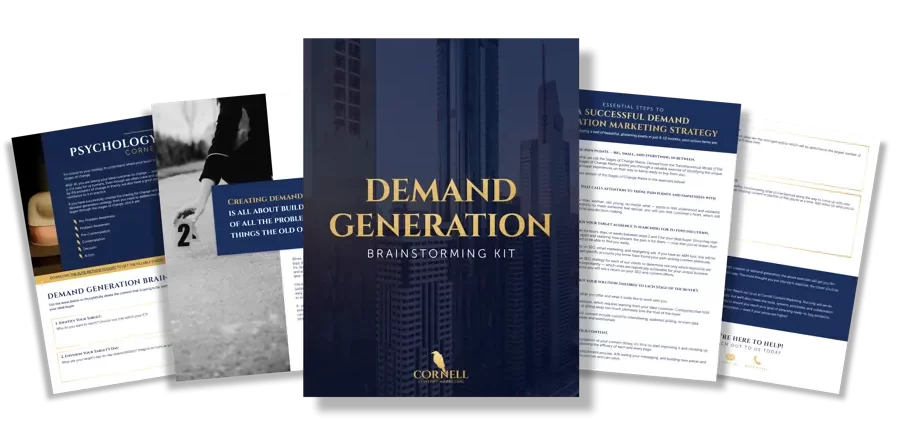Marketing — For most people, the term makes us bristle. Nobody likes being told what to buy, who to buy it from, or generally being “marketed to.” And yet, inbound marketing is critical for attracting new customers, building a positive reputation, and cultivating customer loyalty.
According to Hubspot, 77 percent of companies say they have a marketing strategy, and 70% of marketers are actively investing in content marketing.
Yet, marketing is the reason TiVo was invented and why people are willing to pay for apps that are otherwise free to avoid all the ads.
If we know that everyone – even us marketers – hates being marketed to, why do we do it? Why do we create things that our target audience just wants to block or is going to just scroll by, delete, or toss in the garbage? And why do we make it so hard?
We shouldn’t. It’s time to bring humanity back to marketing. Here are several ways to be successful at inbound marketing without making it so damn hard.
Market to Yourself
Just like doctors never like to think that they can get sick, us marketers never like to think of ourselves as consumers. But we are. And the sooner we embrace that perspective, the better our work becomes.
Think about yourself as a consumer. Do you like seeing billboards? Then don’t use them. Do you like trying to read a website only to get interrupted by a pop-up opt-in window? Then don’t use pop-ups!
If you get annoyed with certain types of inbound marketing, why would you inflict them on the people you want to develop a relationship with as a business? The key to truly winning over an audience is to think about the type of marketing you would be responsive to, then develop a strategy around that.
Define Your Audience’s Psychographics
To bring humanity back to inbound marketing, you need to understand what aspects make your audience tick. Rather than looking at your audience as nothing more than a population with a specific age and income range, look deeper into their personalities.
When focusing on your target audience, it’s far more effective to look at their psychographics rather than their demographics. While demographics describe your audience’s general population traits, psychographics describe their thoughts, feelings, and emotional states.
Ask yourself: How are they feeling? What pain point could they be struggling with? What do they need to see right now? How do they seek out solutions to their pain points?
Psychographics also include your customers’ personal hobbies, values, and most powerful desires.
Once you’ve defined your consumers’ psychographics, it’s time to flesh out your marketing strategies to speak to the heart of your customers’ needs.
Inbound Marketing Strategies that Work
According to Hubspot, a few of the most successful ways to market in 2021 include:
- Blogging
- Video Production
- eBooks
- Social Media
- SEOptimization
Implementing these projects once won’t be enough, though. Posting one or two blogs or creating one video and sharing it on IG won’t move the needle for you.
The key to inbound marketing success is consistency. Publishing blog content consistently attracts the attention of the Google indexing bots; posting regularly to Facebook, Instagram, and other platforms pleases the social algorithms; and providing more touch-points to connect with your audience reinforces that budding relationship.
To choose the right tactics for your business, consider how your consumers prefer to consume content and where they go (Facebook, Google, Amazon, Reddit, etc.) to find solutions to their problems.
You’ll be far more effective – and far ahead of your competition – if you start by focusing on what will resonate with your target audience first, rather than simply asking yourself, “What do we want to share?”.
Center Marketing On Your Consumers
The more genuine and human a brand can be, the more attractive they’ll be to the consumers we want to reach.
Establishing a customer avatar allows you to target the right people who are most likely to support your brand.
It’s not enough to simply create your customer avatar in the beginning and then put it on a digital shelf never to be looked at again.
Rather, use your customer avatar every time you create a piece of marketing. Put yourself in the consumer’s shoes every step of the way. From conceptualizing the product or service to beta testing to launch day, you should be thinking about the end user.
The consumer is the most important piece of the success of your business; so they should be the center of every single action you take in building out your inbound marketing strategy and execution.
You’ve been a human being and a consumer far longer than you’ve been a marketing professional. Using that lifelong expertise to create marketing strategies that will build a positive association for your brand will go farther and be more effective with your target audience than any trending marketing shtick out there.
It’s time to wash the stain off the word “marketing” and give it a nice glistening shine that we can be proud of. Let’s stop making inbound marketing so hard on ourselves and offensive to our audiences.
Let’s put humanity back in marketing.
Need help creating your happy-human inbound marketing strategy? Book a free consult call with Rai Cornell, Marketing Strategist & Senior Copywriter of Cornell Content Marketing.



